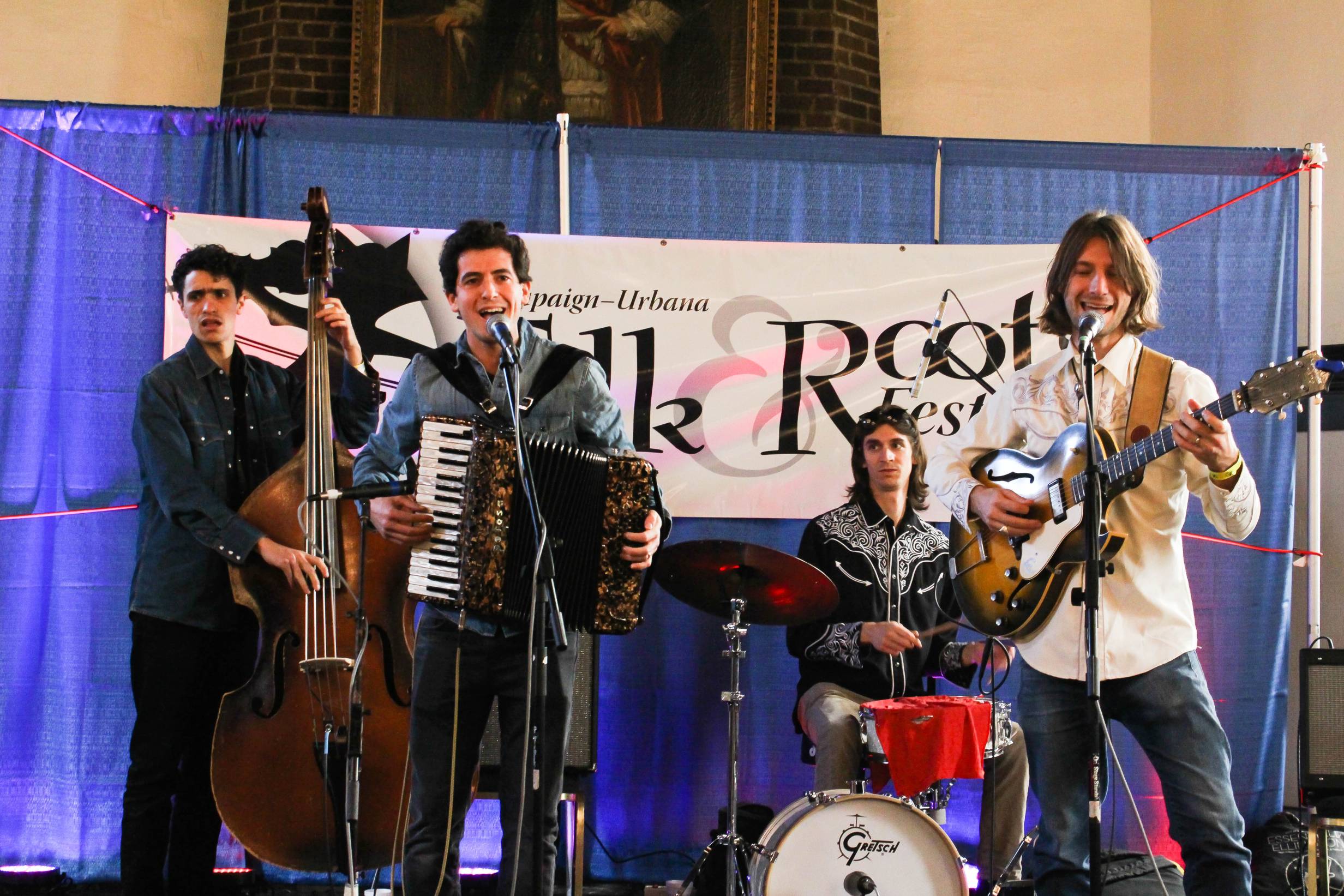The C-U Folk and Roots Festival, now in its 7th year, is an annual volunteer-run celebration of the folk arts. This year’s festival featured a wide-range of events including dances, workshops, storytelling, jam sessions, and musical performances featuring a variety of styles such as bluegrass, blues, Cajun, jazz, old-time, Celtic, and others. I caught some portions of the festival this weekend.
The Spudhunters, a local traditional Irish band, got things going on Friday with an afternoon performance in the lobby of Busey Bank in downtown Urbana. “I’ve never played in a bank before” recalled Jake Schumacher, accordionist and band leader of the Spudhunters. This didn’t stop the Spudhunters from playing some jigs, reels, and a few polka tunes to Irish music enthusiasts and bank patrons alike.
Later Friday evening at the Urbana Landmark Hotel ballroom, Cedric Watson and Les Amis Creoles brought a lot of energy to their set of Cajun and Creole music. As soon as the music started playing, couples from the crowd came to the front and began dancing and swinging to the rhythms. Cedric Watson, four-time Grammy nominated accordionist and fiddle player, acknowledged the dancers: “we feed off your energy, and you feed off of ours”.
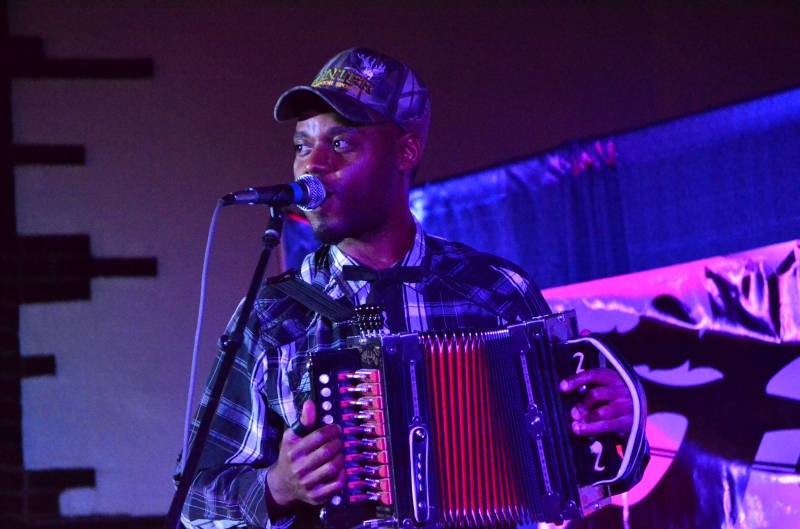 Cedric Watson. Photo by James Krehbiel.
Cedric Watson. Photo by James Krehbiel.
After leaving the ballroom, I was able to snag a table at the Rose Bowl Tavern just before a set by The Way Down Wanderers, a fast-paced modern bluegrass group from Chicago. The five-piece band led by 18-year-old Colin Krause on mandolin and vocals, played a lively and uplifting set of music from their two EPs Wellspring and Path to Follow with lyrics like “I ain’t wasting my time just waiting on some kind of rule that says I shouldn’t bloom” from “Your Will is a Wildflower”. The whole band pulsed with energy while on stage, bassist John Williams shook to every beat while Krause captivated the crowd with his incredible dexterity on the mandolin. They finished off their set by coming off the stage and bringing their instruments down into the crowd for a completely acoustic version of the bluegrass classic “Will the Circle be Unbroken”. After the set I caught up with banjo player Travis Kowalsky, newest member of The Way Down Wanderers, and asked him how such a talented group of young musicians ended up playing bluegrass and Americana music, “We were born into this” he responded. I am glad that these musical traditions are being passed down through generations and are being reinvented with bands like The Way Down Wanderers.
I stuck around the Rose Bowl for a set by Woody Pines, an Americana musician who got his start playing on the streets of Nashville. This upbringing was evident in his level of showmanship and his ability to please the crowd. Woody would often preface his songs with an elaborate story describing the origins of the song he was about to play. This brought the audience back to a time in which folk music and storytelling were much more intertwined than they are now. Woody’s music can be described as “hillbilly boogie”, he draws influence from everything that is considered American music, from rockabilly and blues, to bluegrass and ragtime. With songs like “Chew Tobacco Rag” the best way I can describe his music is just to say that it’s a whole lot of fun.
I started off my Saturday with a performance by the Orpheus Mandolin Orchestra at the Urbana Free Library. The Bloomington, IL based orchestra attribute their name to an old newspaper clipping from 1895 detailing a mandolin orchestra of the same name playing “high-class engagements” in central Illinois. The group spoke about how at the beginning of the 20th century mandolin orchestras could be found all over the United States and Europe, in between playing a mix of songs including tangos and World War I-era tunes.
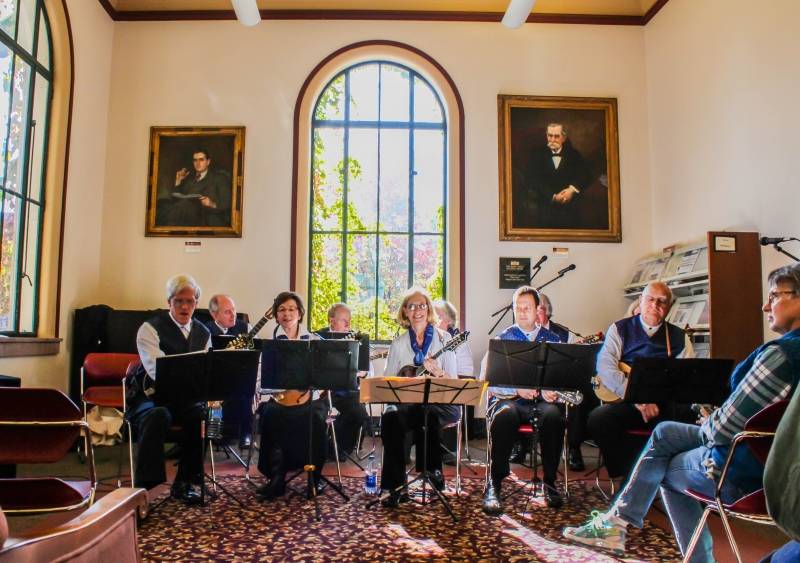 The Orpheus Mandolin Orchestra. Photo by Daniel Shoemaker.
The Orpheus Mandolin Orchestra. Photo by Daniel Shoemaker.
I spent the rest of Saturday going to and from workshops, dances, storytelling events, and musical performances. I got a chance to hear featured storyteller Anne Shimojima tell folktales from ancient Japan that served to show me how these stories are universal and can still have relevance hundreds of years later being told halfway around the globe.
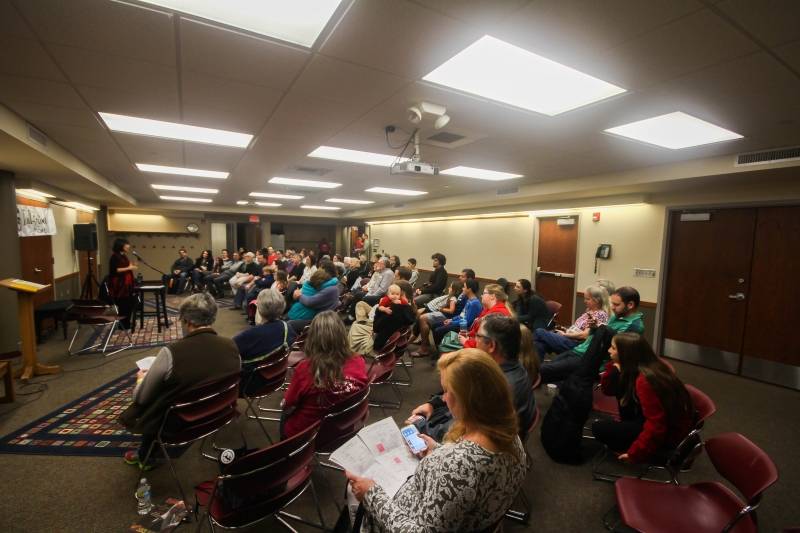 Anne Shimojima, storyteller. Photo by Daniel Shoemaker.
Anne Shimojima, storyteller. Photo by Daniel Shoemaker.
Later Saturday evening I was lucky enough to squeeze myself into the Iron Post to hear a few songs played by renowned folk singer-songwriter John Gorka, who has been playing and writing folk songs for more than 30 years and has released a dozen studio albums. Gorka’s set was definitely the most moving of the festival, he prefaced the song “Semper Fi” by saying that it was about how his father had to choose between joining the military and going to work in the coal mines: “Soldiers fight and soldiers die, soldiers live to wonder why… My father lay recovering, the hurt was all inside. Sometimes the wounds that never heal are the easiest to hide”.
The one downside to the festival was the fact that some of the venues were packed to max capacity for a lot of the featured performers like John Gorka. This is a positive indication that the festival is thriving and continues to grow from year to year, but it is also something that festival organizers may want to consider looking ahead to the future. This is a one-of-a-kind community festival that needs to be able to accommodate an increasing number of festival-goers.
One reoccurring theme that summarizes my experience at the festival was laid out by Sam Reider of The Amigos, an indie-Americana fusion band based out of NYC, at their “Americana Groove Machine Workshop”, “You can’t fit music in a box… and you never have been able to”, referring to the idea that folk music is really just world music and there is no such thing as a style of music that exists by itself, every traditional form of music is influenced by the cultures that it comes into contact with. This fact was extremely evident in the wide variety of musical styles that were showcased at the C-U Folk and Roots Festival this past weekend.
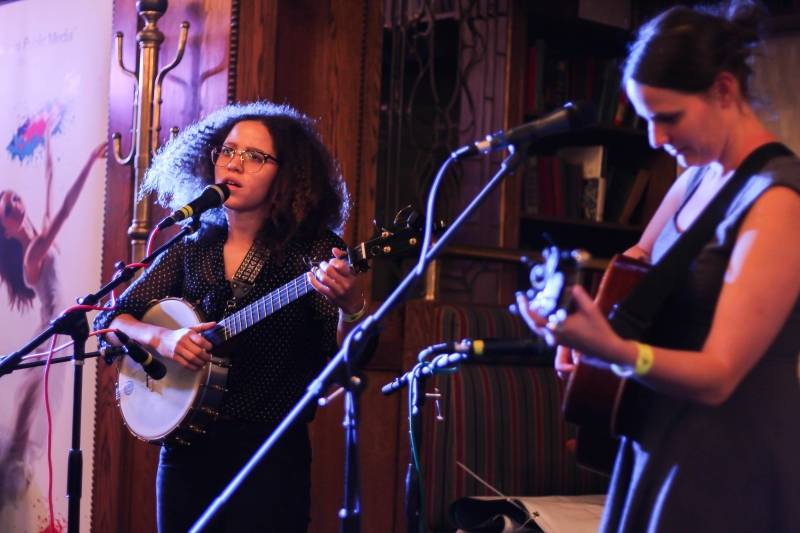 Kaia Kater and Rebecca Wudarski. Photo by Daniel Shoemaker.
Kaia Kater and Rebecca Wudarski. Photo by Daniel Shoemaker.
[gallery c-u_folk_and_roots_festival]








